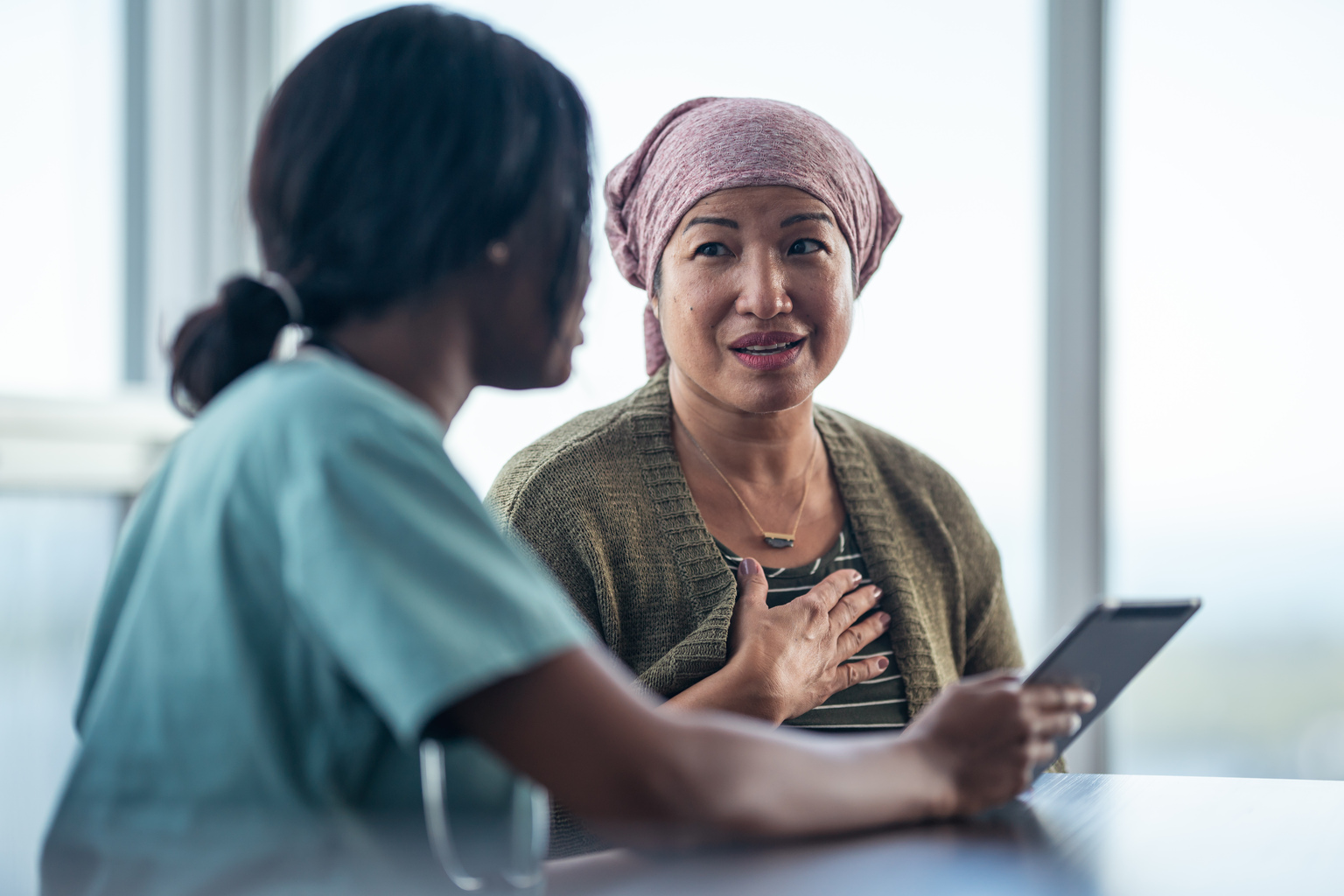Over the years, healthcare stakeholders have worked to define clinical empathy. They’ve measured it. They’ve assessed its impact. But can they teach the skills required to become a more empathetic person — and clinician — overall?
Nkechi Conteh, MD, MPH, Staff Psychiatrist, Massachusetts General Hospital in the United States, suggests they can — and must. In a recent perspective article about perinatal mental health for the Harvard Review of Psychiatry, Dr. Conteh and her coauthors call on providers and institutions to prioritise empathy in clinical practice, particularly when working with ethnically and racially diverse populations.
Clinicians must educate themselves
“Considering the long history of mistreatment and misinformation promulgated by the American medical community, present-day healthcare providers face an enormous task of acknowledging and attempting to address the wrongs of four centuries of misperception, misdiagnosis, mistreatment and misinformation,” Dr. Conteh and her coauthors write.
“An important starting point is to overcome societal implications of the ‘subhuman’ or ‘other’ status of individuals from minoritized racial and ethnic identities. Recognizing patients as fellow human beings, inquiring about their lived experiences and expressing genuine concern and authentic desire to help are essential components of all patient-centered interactions.”
Moreover, such empathy should be self-taught, Dr. Conteh says. Where most physicians in the United States identify as White, marginalised communities shouldn’t be responsible for helping providers understand their worldviews. Instead, physicians must work to fill the gaps in their own understanding.
“A lot of the time, the onus seems to be on the patient or clinicians of color to teach and provide information,” Dr. Conteh says. “But that’s not really our job or the job of patients. The onus is on the person who wants to help people.”
Clinicians, therefore, need to be understanding and empathetic towards their patients and to seek to understand their perspectives – especially those different from the clinician’s own lived experiences. The World Health Organization (WHO) notes that while a person’s social determinants of health account for health disparities, they are often made worse through systemic embedding of stereotypes, prejudices, and discriminations, disproportionately affecting women, older people, people with disabilities, or those based on race, ethnicity, or sexual identity. Recognising these sources of disparities is key to addressing them in a clinical setting.
While Dr. Conteh’s research has focused on perinatal health in the United States, her insights from studying medical mistrust among pregnant people can be applied to other disciplines around the world to help overcome systemic barriers and promote health equity.
Here’s how modern-day providers can develop the skills necessary to approach everyday encounters more empathetically.
Listening to and learning from patients
When we asked Dr. Conteh how clinicians can develop empathy, she said simply: “Listen.”
“You can never go wrong with listening,” she adds. “Empathy is listening, hearing the stories, reading the books, educating yourself. It’s something that everyone could work on when interacting with anyone who has different lived experiences, which we all do.”
Immersive experiences outside of the practice may help further contextualise those learnings, according to a paper from the American Psychological Association. Something as simple as consuming media featuring diverse characters can create a recognisable “backdrop” to understand the patient’s point of view. Other activities such as visiting diverse communities can also be helpful, the authors add.
And don’t forget the value of continuing education and competency tools. Special resources from the World Health Organization, AudioDigest, Lippincott Solutions and others can also help make empathy a more inherent part of clinical practice, as can including patient perspectives in everyday tools and educational materials.
Finding a shared language
Medical jargon can create a wedge between patients and providers. Even if clinicians don’t sense the divide, marginalised patients might. In learning to be more empathetic, Dr. Conteh suggests that providers be more aware of their language and focus on creating a dialogue that is understandable and shared.
“A good way to improve empathy with patients is to just speak the way they do,” she says. “Find a common vernacular and use that to build rapport and guide the conversation. You could ask clarifying questions to get yourself on the same page, such as ‘Is this okay?’ or ‘Should I repeat myself’? Training yourself to explain things simply can make a big difference.”
Not only can that jargon lead to negative clinical effects, but it can also damage the patient-provider relationship and potentially lead patients to stop getting care altogether. For example, one Advisory Board briefing notes how standard terms such as “complaint” can unintentionally belittle patients.
Incorporating empathetic practices
Adopting certain practices may also help clinicians learn empathy, both as a group and individually. As one example, one paper in the Journal of Neuroscience Nursing explored the impact of so-called “empathy huddles” among nurses, which ultimately improved HCAHPS satisfaction scores.
Other practices may help too, such as sitting with, rather than standing over, patients, and carefully reading their facial expressions or body language during encounters. Becoming more intentional about these everyday behaviors creates the opportunities to listen and learn that Dr. Conteh suggests prioritising.
Creating and sustaining empathy curriculum in medical schools
One of the biggest reasons why clinicians may struggle to develop clinical empathy is that they simply weren’t taught how. Modern-day medical curriculum doesn’t focus on these soft skills the way it should, Dr. Conteh suggests. Moreover, research has shown that empathy can decline as medical school goes on, seemingly as students get hardened to the realities of medicine.
“It’s hard to learn skills when you’ve gone through the system already,” she says. “All of these things — social determinants of health, health equity, empathy, cultural sensitivity — they all should be taught in residency programs and maintained throughout medical education so that physicians don’t lose sight of these important tenets of care.”
Beyond including these subjects in educational materials, medical schools should also educate students on the more shameful parts of healthcare’s history within their countries and cultures. In the United States, for example, medical students should learn about the Tuskegee syphilis study that denied sick African American participants penicillin. Even if that history doesn’t become part of the medical curriculum, clinicians should still learn about it to avoid repeating the same mistakes, Dr. Conteh says.
“I learned little about how vulnerable populations were harmed in psychiatry in my training she says. “I had to do my own research. Adding this to the curriculum will help clinicians develop empathy, but that shouldn’t stop those of us who are already practicing from learning those painful parts of history.”
Overcoming the barriers to clinical empathy
Despite the need for and advantages of clinical empathy, there are clinical barriers that preclude it. Common obstacles include a lack of time and rigid workflows that leave little room for emotional connection. As much as the responsibility is on clinicians to learn empathy, the organisations they work for should aim to create a culture that supports their development.
Integrated training tools that facilitate evidence-based, empathy-focused best practices can help overcome those barriers and cultivate the kind of listening and learning that Dr. Conteh advises. From nursing competency platforms to world-class journals, clinical decision tools to educational curriculum, clinicians and healthcare professionals can continually develop the skills they need to provide equitable, empathetic care to all.
Learn about Wolter Kluwer’s commitment to health equity and explore professional development resources for healthcare professionals and clinicians to promote life-long learning.





